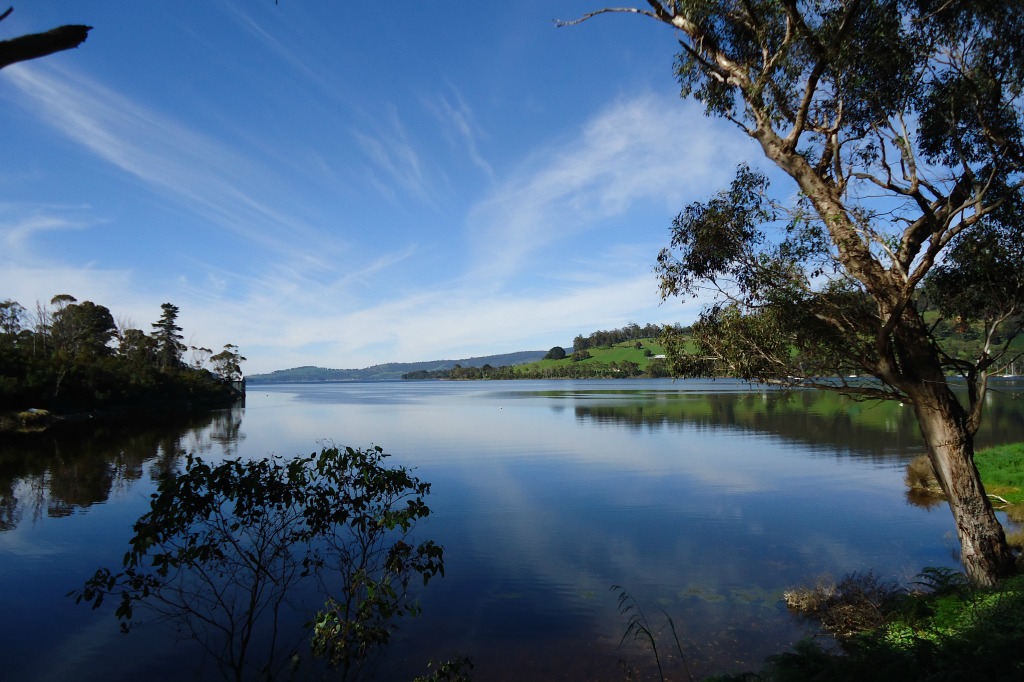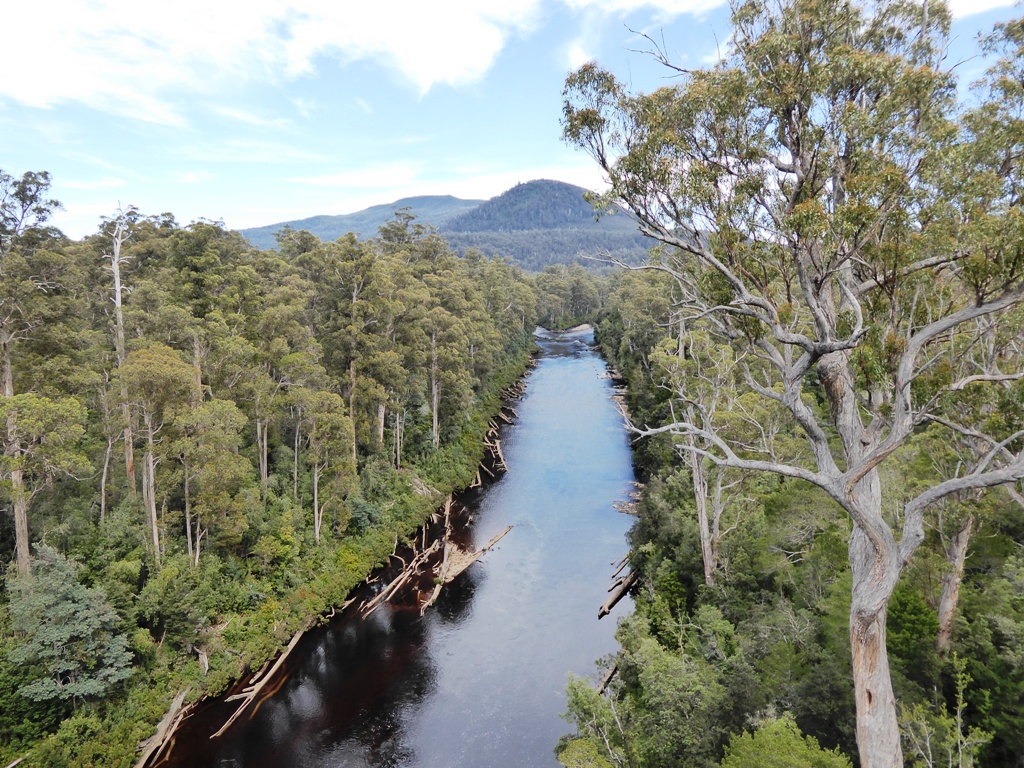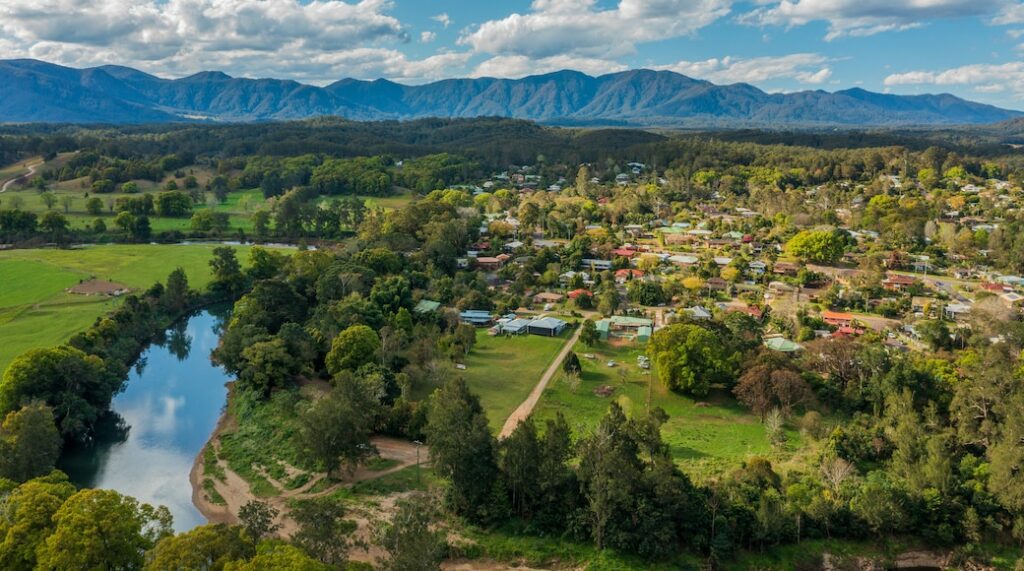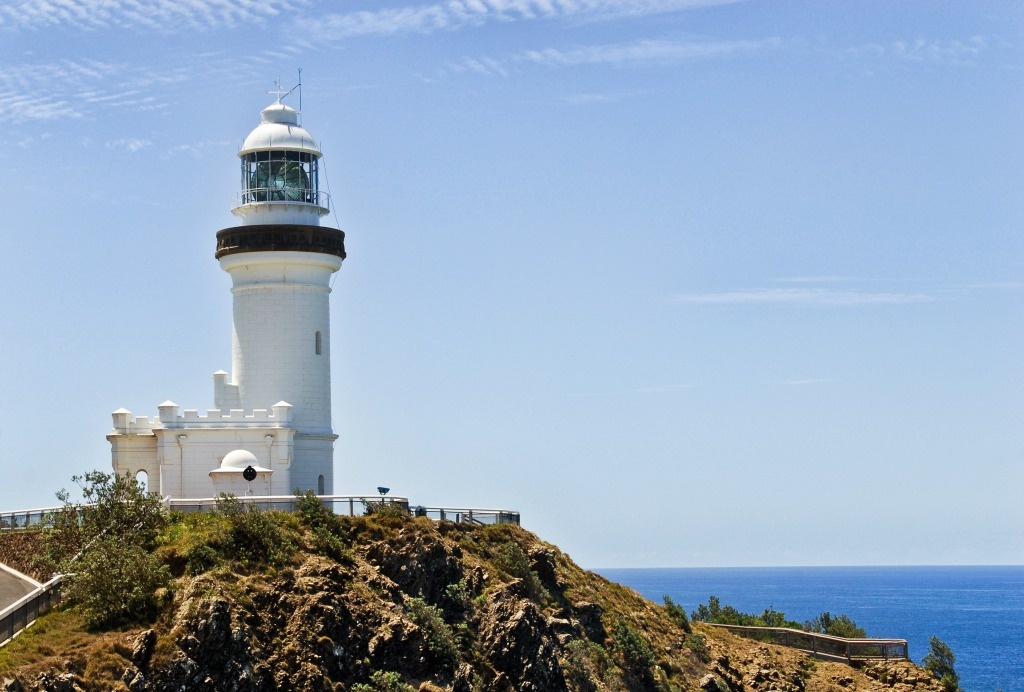Tasmania Australia Travel Guide A Vagabond Life
Welcome to Tasmania, Australia’s island state, a place of wild and beautiful landscapes, rich convict history, and vibrant local culture. Separated from the mainland by the Bass Strait, Tasmania offers an escape into a world of rugged mountains, tranquil beaches, and lush rainforests, making it a haven for nature lovers and adventure seekers alike.
Tasmania’s convict history is a poignant part of its heritage, with several UNESCO World Heritage-listed convict sites. The most famous of these is the Port Arthur Historic Site, located on the Tasman Peninsula. Once a penal colony, Port Arthur provides a deep dive into the lives of convicts who were transported to Australia in the 18th and 19th centuries. Visitors can explore the well-preserved ruins, including the penitentiary, hospital, and convict church, all set against a stunning natural backdrop.
But Tasmania is not just about its past. The island is also celebrated for its vibrant arts scene, gourmet food and wine, and the warm hospitality of its people. From the bustling markets of Hobart, the capital city, to the serene beauty of the Freycinet Peninsula, Tasmania offers a diversity of experiences. Whether you’re hiking the Overland Track, savoring fresh Tasmanian seafood, or tracing the steps of history at a colonial mansion, Tasmania invites you to explore its unique landscapes and stories.
When To Visit Tasmania
The best time to visit Tasmania largely depends on your preferences and interests. Generally, Tasmania experiences four distinct seasons, each offering its own unique charm.
Summer (December – February): Summer is the peak tourist season in Tasmania, offering warm temperatures and longer daylight hours. It’s ideal for outdoor activities such as hiking, camping, and exploring the island’s stunning coastline.
Autumn (March – May): Autumn brings cooler temperatures and vibrant foliage, making it a picturesque time to visit. It’s perfect for enjoying scenic drives, wine tasting in the Tamar Valley, and attending the colorful festivals like the Dark Mofo arts festival in Hobart.
Winter (June – August): Winter in Tasmania is chilly, but it’s a great time to experience the island’s cozy atmosphere. You can enjoy winter festivals, indulge in gourmet food and wine by a fireplace, or embark on snow sports adventures on Mount Wellington.
Spring (September – November): Spring brings blooming flowers, mild temperatures, and the opportunity to witness newborn wildlife. It’s an excellent time for nature walks, visiting botanical gardens, and enjoying the vibrant spring festivals across the island.
Ultimately, the best time to visit Tasmania depends on your interests, whether you prefer outdoor activities, cultural events, or simply experiencing the island’s natural beauty in a particular season.
Tasmania Australia Map
Getting To Tasmania Australia
Getting to and around Tasmania involves a few steps, but it’s well worth the effort for its stunning landscapes and unique experiences. Here’s a guide to help you navigate:
By Air
Hobart Airport (HBA): The main airport serving Tasmania, with flights from major cities like Sydney, Melbourne, and Brisbane.
Launceston Airport (LST): Another major airport, with flights connecting to mainland cities.
Devonport Airport (DPO): Smaller airport with flights primarily from Melbourne.
Direct Flights: Qantas, Virgin Australia, and Jetstar operate direct flights from major Australian cities.
By Sea
Spirit of Tasmania: This ferry service runs between Melbourne and Devonport. It’s a great option if you’re bringing a vehicle and want to experience the journey across Bass Strait.
Getting Around Tasmania Australia
Car Rental
Renting a car is highly recommended as public transport options can be limited, especially for exploring the more remote areas. Major rental companies have offices at the airports and in larger towns.
Public Transport
Buses: There are bus services operated by companies like Tassielink and Redline that connect major towns and cities.
Trains: Tasmania doesn’t have a regular passenger train service, but the historic West Coast Wilderness Railway offers scenic trips.
Biking
Tasmania is known for its bike-friendly trails. Consider renting a bike to explore cities like Hobart or Launceston, or to tackle some of the scenic bike trails.
Taxis and Ride-Sharing
Taxis and ride-sharing services like Uber operate in major cities and towns. In more remote areas, availability might be limited.
Tips:
- Planning Ahead: Given Tasmania’s size and the distances between attractions, planning your itinerary and accommodation in advance is helpful.
- Weather: Be prepared for changing weather conditions, as Tasmania can experience all four seasons in a single day.
Tasmania’s natural beauty and unique charm make it a rewarding destination to explore. Enjoy your trip!
Things To See & Do In Tasmania Australia
Hobart Tasmania
Hobart, the charming capital of Tasmania, Australia, blends rich history with a vibrant cultural scene against the backdrop of stunning natural beauty. Nestled between the Derwent River and the majestic Mount Wellington, Hobart offers a unique mix of heritage and lifestyle, making it a must-visit destination.
Five highlights of Hobart include:
- Salamanca Place: Famous for its Georgian warehouses, now home to galleries, cafes, and the iconic Salamanca Market held every Saturday, offering a feast of local produce and crafts.
- MONA (Museum of Old and New Art): A world-renowned contemporary art museum, accessible by a scenic ferry ride, challenging perceptions with its avant-garde exhibitions.
- Mount Wellington: Provides breathtaking panoramic views of the city, river, and beyond. It’s a paradise for hikers and nature enthusiasts.
- Royal Tasmanian Botanical Gardens: Established in the 19th century, these gardens offer a serene escape with a collection of native and exotic plants.
- Battery Point: A historic district with narrow lanes and colonial-era cottages, perfect for a leisurely stroll to soak in the old-world charm.
Hobart’s combination of natural wonders, cultural richness, and historical depth offers an enriching experience for every visitor.
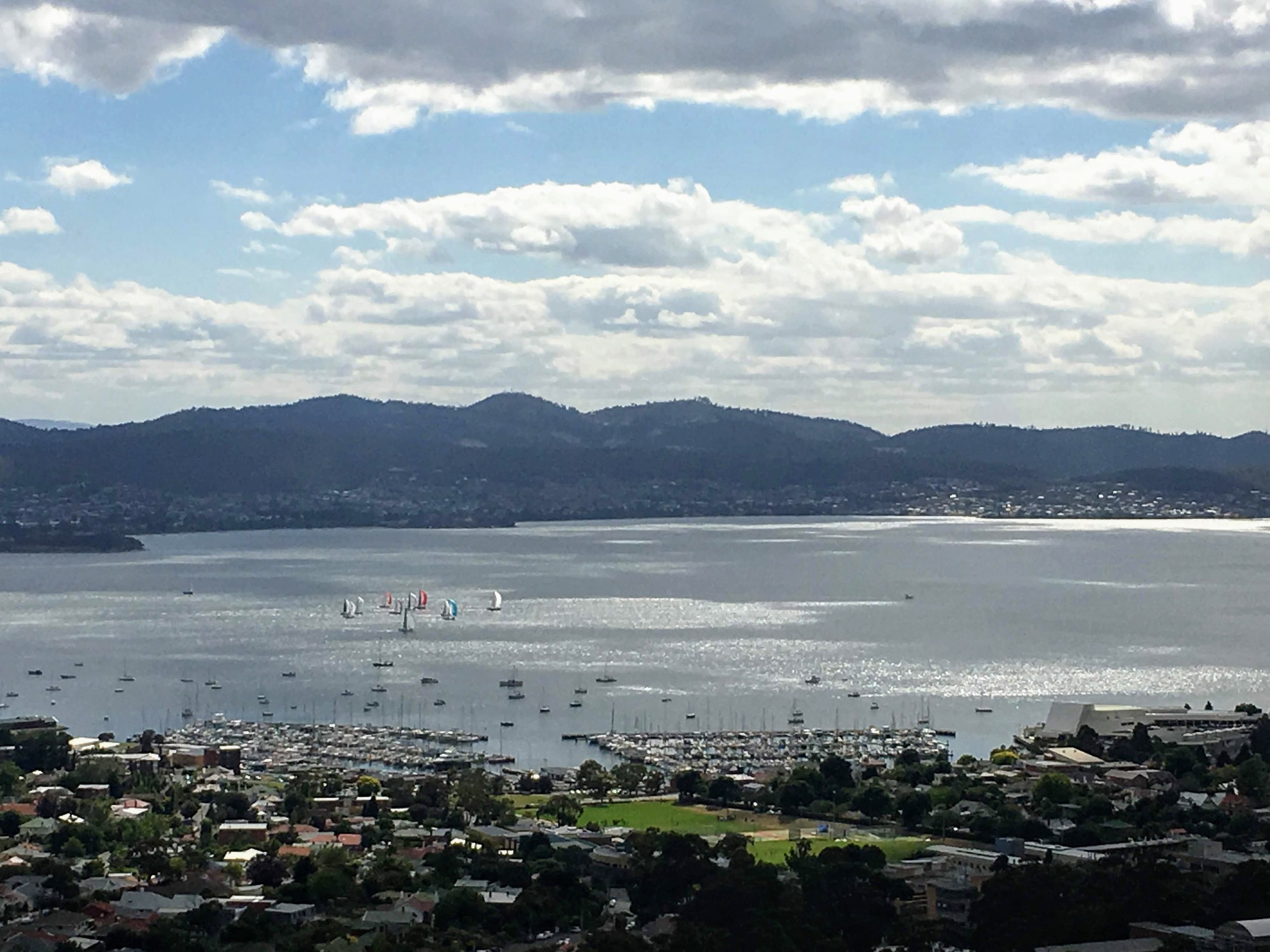
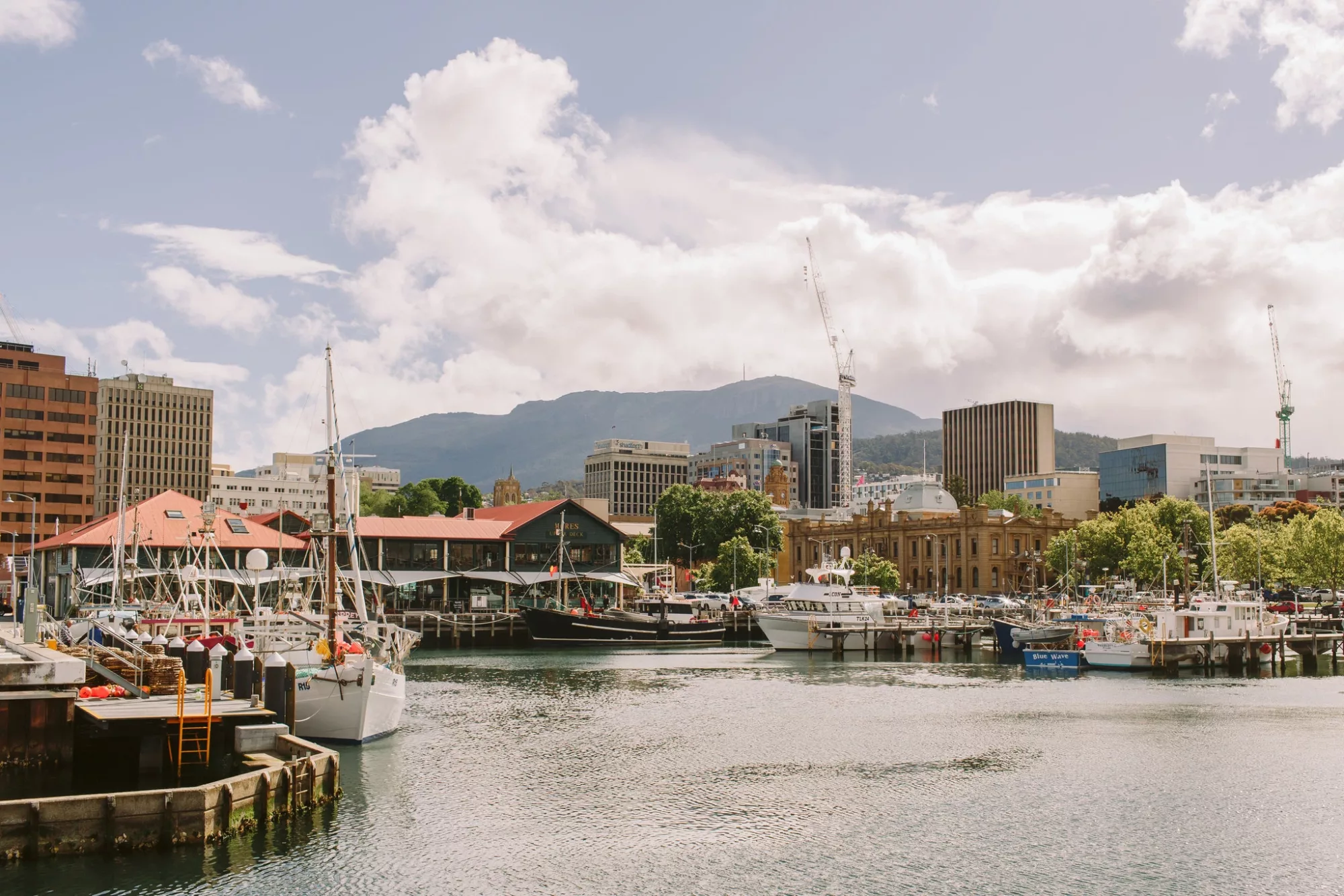
Bruny Island
Bruny Island, located off the southeastern coast of Tasmania, is a serene escape known for its stunning natural landscapes, diverse wildlife, and exquisite local produce. This island offers a blend of rugged coastline, quiet beaches, and lush rainforest, making it a haven for nature enthusiasts and foodies alike.
Five highlights of Bruny Island include:
- The Neck: A narrow, isthmus connecting the north and south parts of the island, offering panoramic views from the lookout.
- South Bruny National Park: Home to towering cliffs, secluded beaches, and the historic Cape Bruny Lighthouse, which provides spectacular vistas.
- Bruny Island Cheese Co.: Famous for its artisan cheeses, this spot is a must-visit for food lovers.
- Adventure Bay: A starting point for wildlife cruises, where you can see dolphins, seals, and whales during migration seasons.
- Local gourmet produce: From oysters at Get Shucked Oyster Farm to handcrafted chocolate at the Bruny Island Chocolate Company, the island is a feast for the senses.
Getting to Bruny Island is an adventure in itself. The island is accessible via a short 20-minute ferry ride from Kettering, which is about a 30-minute drive south of Hobart. Once on the island, a vehicle is recommended to explore all the sights and experiences Bruny Island has to offer.
Mt Wellington
Mt Wellington / kunanyi
Mount Wellington, towering over Hobart, Tasmania, is an iconic natural landmark offering breathtaking panoramic views and outdoor adventures. Rising 1,271 meters above sea level, it provides an exhilarating escape into the wilderness just a short drive from the city center.
Highlights of Mount Wellington include:
- The Summit: Reachable by car or on foot, the summit boasts stunning vistas of Hobart, the Derwent River, and beyond.
- Walking and Hiking Trails: Explore a network of trails catering to various fitness levels, including the renowned Organ Pipes Track and the challenging Pinnacle Track.
- Snow in Winter: Experience snowfall and winter sports like skiing, snowboarding, and tobogganing during the colder months.
- Sunrise and Sunset: Witness spectacular sunrise or sunset views from the summit, painting the sky with vibrant hues.
- The Springs: A popular picnic spot with barbecue facilities and access to hiking trails.
To reach Mount Wellington, visitors can drive, cycle, or take a bus from Hobart to the summit. The winding road offers scenic viewpoints along the way, making the journey as rewarding as the destination.
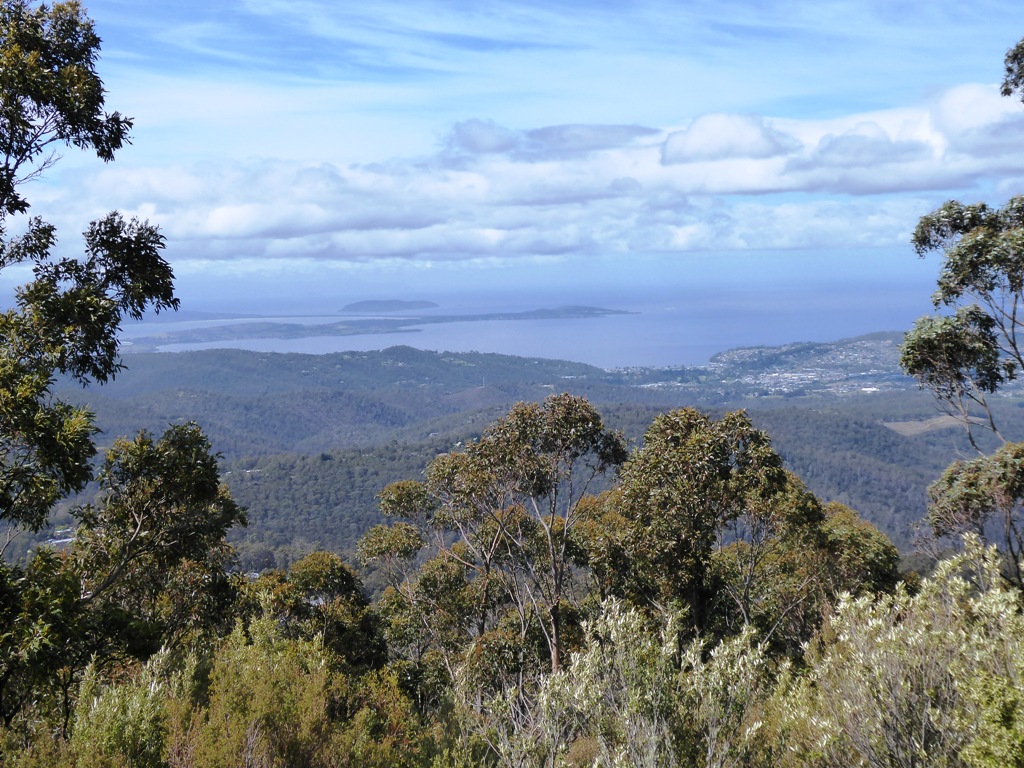
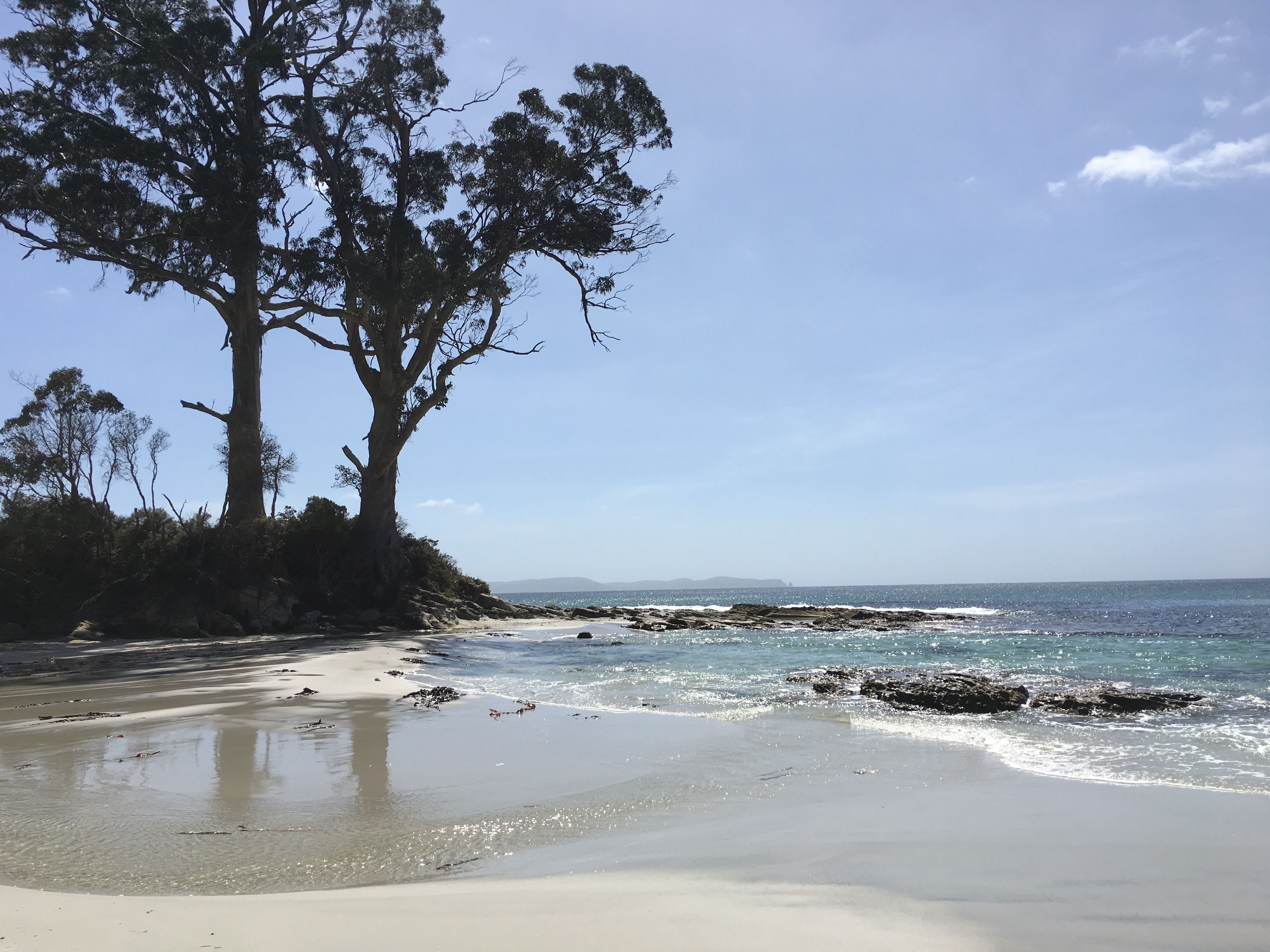
Port Arthur Tasmania
Port Arthur
Port Arthur, located on the Tasman Peninsula in Tasmania, Australia, is a site of profound historical significance and natural beauty. Once an infamous convict settlement, today it stands as a haunting reminder of Australia’s colonial past and is a UNESCO World Heritage-listed site, attracting visitors from around the globe.
Established in 1830 as a timber station, Port Arthur evolved into one of the most dreaded penal colonies for British convicts, notorious for its harsh conditions, isolation, and use of psychological punishment. The settlement was designed to reform and punish convicts, with many buildings still standing to tell the tales of those who lived and died here.
Top things to see at Port Arthur include:
- The Penitentiary: A massive ruin that once housed over 480 convicts, offering insight into their living conditions.
- The Separate Prison: Illustrates the shift from physical to psychological punishment, with its solitary confinement cells.
- The Isle of the Dead: The final resting place for over 1,000 convicts, military personnel, and civilians, accessible by ferry.
- The Convict Church: Built by convict labor, although never consecrated, it’s a striking ruin set against a picturesque backdrop.
- The Historic Ghost Tour: Offers a chilling exploration of the site’s paranormal activities after dark.
To reach Port Arthur, visitors can drive from Hobart – a scenic journey of approximately 90 minutes – or join one of the many tours that explore the rich history and stunning landscapes of the Tasman Peninsula. Port Arthur’s compelling blend of natural beauty and dark history makes it an essential visit for anyone wanting to understand Australia’s complex past.
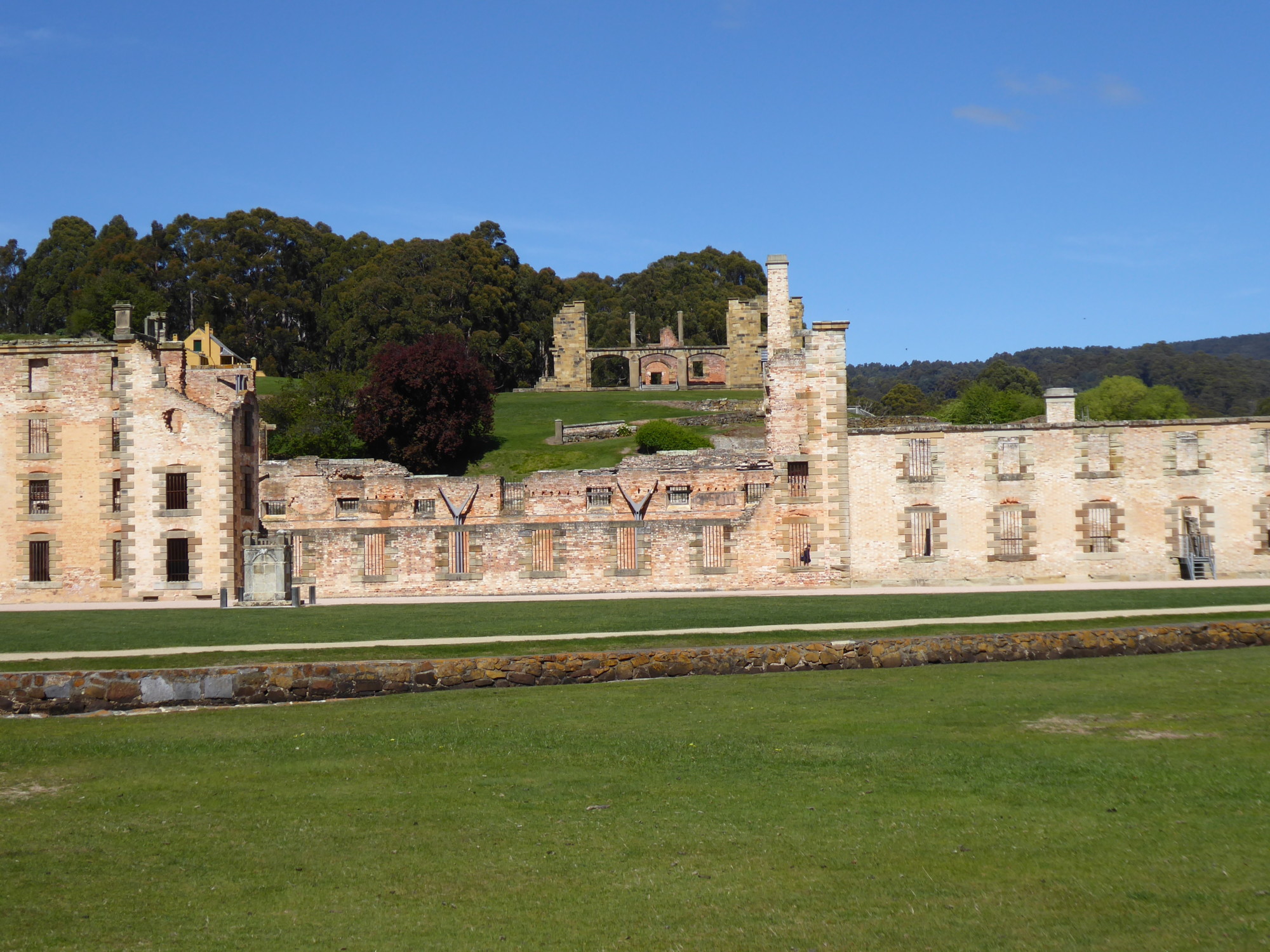
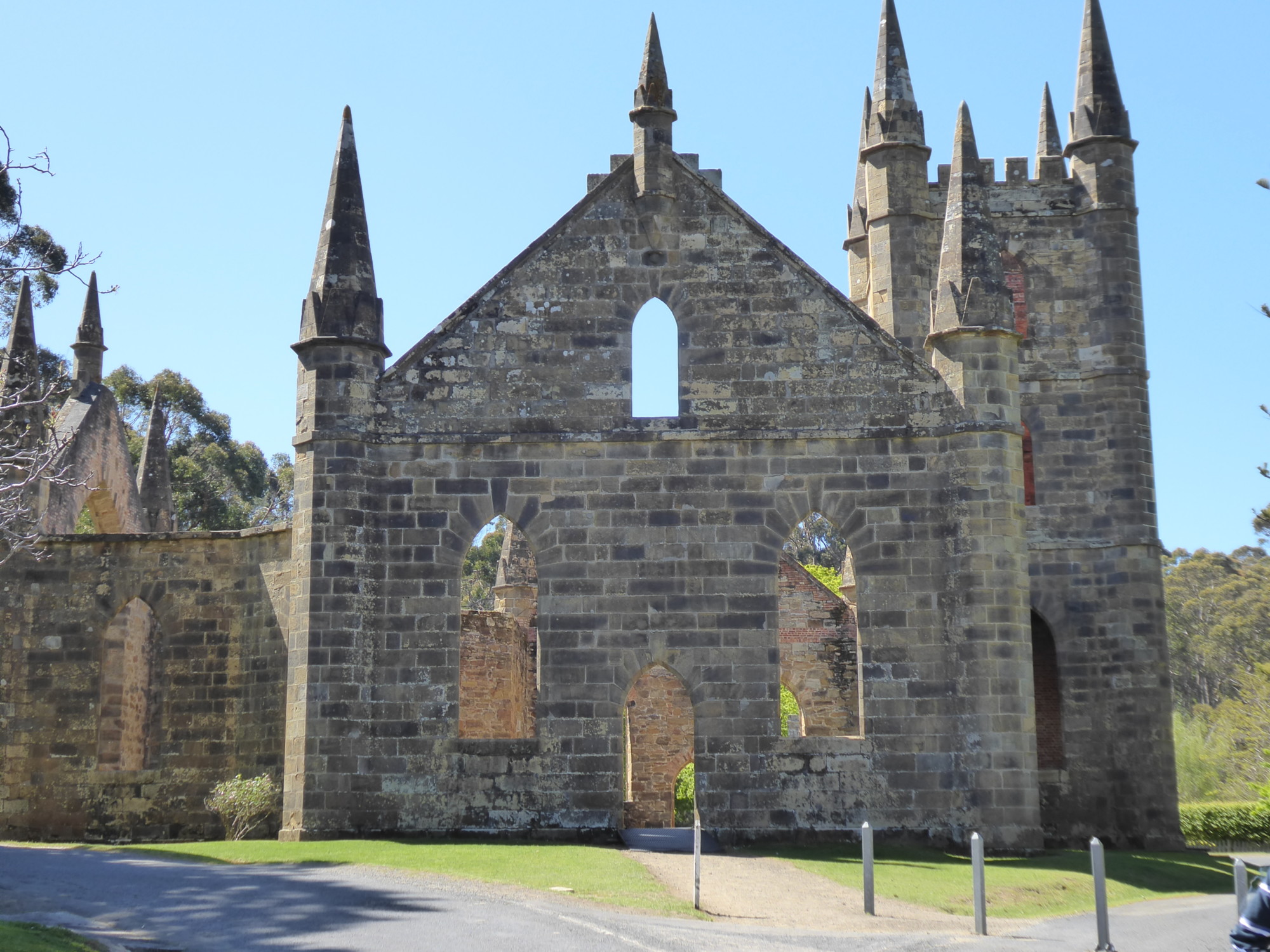
Wineglass Bay Tasmania
Wineglass Bay, located on Tasmania’s stunning Freycinet Peninsula, is renowned worldwide for its pristine beauty and breathtaking scenery. Named for its perfect crescent shape resembling a wineglass, this iconic bay boasts crystal-clear turquoise waters, powdery white sands, and dramatic granite cliffs, creating a mesmerizing landscape that captivates visitors from all corners of the globe.
Accessible via a picturesque hike or a scenic boat tour from Coles Bay, Wineglass Bay offers visitors an array of unforgettable experiences. The trek to the Wineglass Bay lookout rewards hikers with panoramic vistas of the bay and surrounding coastal wilderness, while those seeking a more immersive experience can descend to the bay itself for a refreshing swim or a relaxing picnic on the beach.
Beyond its natural beauty, Wineglass Bay is also renowned for its rich biodiversity, with opportunities for wildlife spotting including dolphins, seals, and seabirds. The area is part of the Freycinet National Park, ensuring its protection and preservation for future generations to enjoy.
Whether you’re seeking adventure, relaxation, or simply a moment of tranquility amidst nature’s splendor, Wineglass Bay is a must-visit destination that promises to leave an indelible impression on all who venture there.
West Coast Tasmania
The rugged and untamed West Coast of Tasmania, Australia, is a land of wild beauty and rich history. Stretching from the remote reaches of the Arthur River in the north to the wild and windswept Southwest National Park in the south, this region is a haven for adventurers, nature lovers, and history buffs alike.
The West Coast is characterized by its dramatic landscapes, with towering mountains, ancient rainforests, and pristine rivers defining the scenery. One of the area’s most iconic landmarks is the imposing Cradle Mountain, part of the UNESCO World Heritage-listed Tasmanian Wilderness. Visitors can embark on hikes through the mountain’s alpine terrain or explore the enchanting forests surrounding its base.
The West Coast is also steeped in history, with a legacy of mining dating back to the 19th century gold rush. Towns like Queenstown and Zeehan are dotted with remnants of their industrial past, including abandoned mine shafts and historic buildings that offer a glimpse into the region’s pioneering spirit.
For those seeking adventure, the West Coast offers a wealth of outdoor activities, from white-water rafting on the Franklin River to exploring the rugged coastline by kayak. Whether you’re drawn to its natural beauty, its rich history, or its spirit of adventure, the West Coast of Tasmania is a destination like no other, promising unforgettable experiences for all who venture there.
Tahune Adventures Tasmania
Tahune Adventures Tasmania, formerly known as Tahune AirWalk, is nestled within the dense, lush forests of southern Tasmania, offering visitors a unique blend of natural beauty, adventure, and ecological education. This spectacular nature park, located about a 90-minute drive from Hobart, draws its name from the indigenous word for “peaceful place by running water,” aptly reflecting the serene beauty and the sounds of the Huon River that borders the site.
The park’s history is deeply intertwined with Tasmania’s rich forestry heritage, initially established to showcase the state’s sustainable forest practices and the importance of conservation. Over time, it has evolved into a premier eco-tourism destination, providing immersive experiences in one of Tasmania’s most stunning natural landscapes.
Top attractions and hikes at Tahune Adventures include:
- The AirWalk: A cantilevered walkway suspended up to 50 meters above the forest floor, offering breathtaking views of the forest canopy, the Huon and Picton rivers.
- Swinging Bridges Walk: Two swinging bridges over the Huon and Picton rivers provide thrilling crossings with stunning views.
- Eagle Hang Gliding: For the more adventurous, soar like an eagle on a glide across the Huon River.
- Huon Pine Walk: A gentle, accessible walk that meanders along the riverbank, showcasing the ancient Huon Pines, some of the oldest living organisms on Earth.
Tahune Adventures Tasmania encapsulates the heart of Tasmania’s wilderness, offering a mix of adrenaline-pumping activities and serene walks that allow visitors to connect deeply with nature’s wonders.
Cygnet Tasmania
Cygnet, a quaint and vibrant town nestled in the Huon Valley of Tasmania, is renowned for its artistic community, organic produce, and stunning natural surroundings. Located just a 55-minute drive south of Hobart, this charming locale offers a peaceful retreat with its rolling hills, orchards, and the serene waters of the Huon River. Cygnet comes to life with cultural events like the Cygnet Folk Festival, drawing artists and musicians from around the world. The town is a hub for food enthusiasts, featuring local cafes and markets brimming with fresh, organic produce. For those seeking a blend of culture, community, and natural beauty, Cygnet is a Tasmanian gem waiting to be explored.
